These are my reflections from five months of practicing Theatre of the Oppressed with adolescent girls and children in Kutch
By the end of design school, there was a certain mistrust in what I was doing. No matter how social the ‘problem’ is or how much one researches, analyses, prototypes, empathises; nothing seemed to be of any practicality or use to people. More so, with visual arts, which I have flirted with since childhood. No amount of painting, drawing, postering, posting, photographing, publishing, screaming, shouting, protesting, or writing seemed to reach any one of the consequences or at the least, bring momentary respite.
It is month 14 of my fellowship. Having jumped ship from design to this (at least for now), I found myself telling a friend one day,
“What’s the point of making art about water scarcity? I’d rather hand a person a glass of water.”
Enter Theatre of the Oppressed
Chancing upon Theatre of the Oppressed (TO) via a fling with performance art has changed my outlook in some ways. A missing link seems to have been bridged. There is after all a praxis rooted in people, grounded in reality and most importantly, action.
It has only been a few months since I began practicing TO in Kutch as a part of KMVS. Call it beginner’s infatuation but I’ve begun to find meaning and enjoy the immediate fruits of my labour through this. It led to an alignment with work. Of course, I’ve barely begun and there’s a lot waiting for me to learn, unlearn and maybe feel disappointed about. Here are a few events where I practiced TO.
With Children At Gram Swaraj Sangh (GSS), Rapar
July 28th-30th, 2023
This was a part of 3-day shibir (camp) organised by GSS where KMVS was conducting a gender sensitisation training. The participants were children in the age group of 10-12 years. It was my first time working with this age group. They study at the school in GSS and primarily belong to Koli community. In the group of 45 children, there were only 4 girls. Initially, I was approaching it conservatively, using activities to open up the participants. However, with limited time and gauging the participants’ energy in the room, I focused more on the play itself.
One conflict arose while doing Image Theatre when a group recreated the scene of a temple. Upon opening up the scene for discussion with spect-actors (audience), a girl added three more people beside the Hindu worshiper. She made them pray to different faiths. However, the boy who was playing a Muslim, didn’t want to play his part. Three more boys denied before someone finally took the place. Upon asking the spectators, one person said that it wasn’t a mandir anymore. I asked if we could imagine this to be a place of worship for everyone. While most people agreed, a few boys expressed their disapproval, “Hum sehmat nahi hai iss cheez se”.
I had also been noticing how the certain boys’ groups were struggling to work with the girls. Even within the same group, the boys and girls would work separately and come up with different plays. They got into scuffles and were unwilling to work together. In a group that large, it was difficult for me to pin point exactly what was wrong.
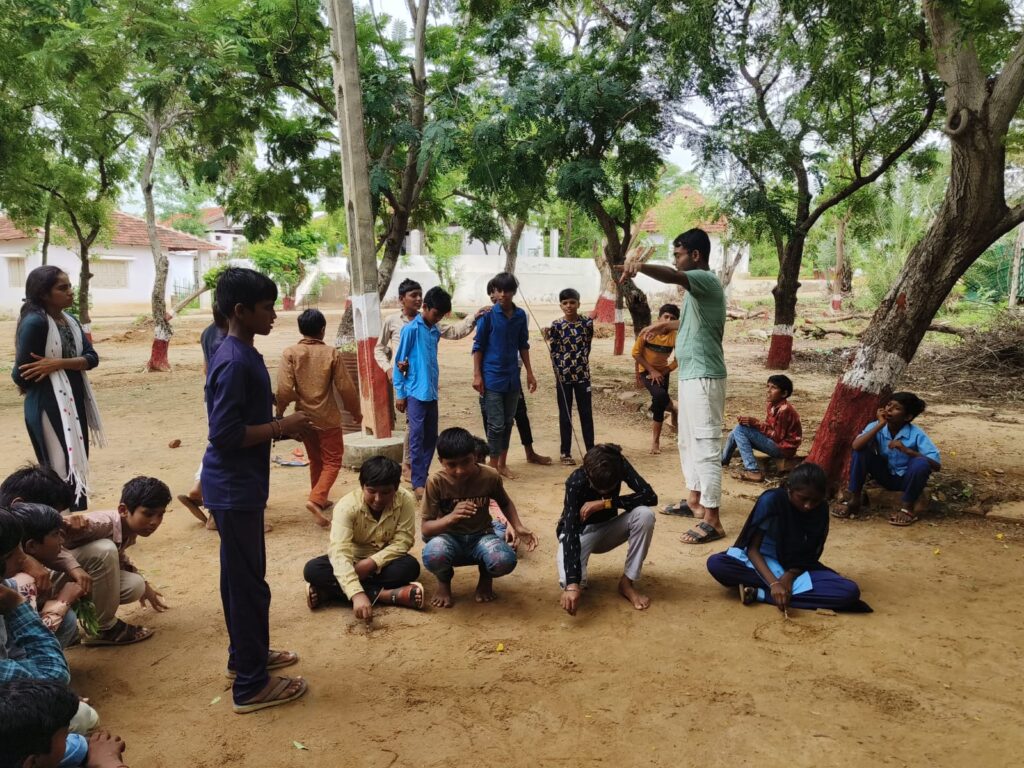
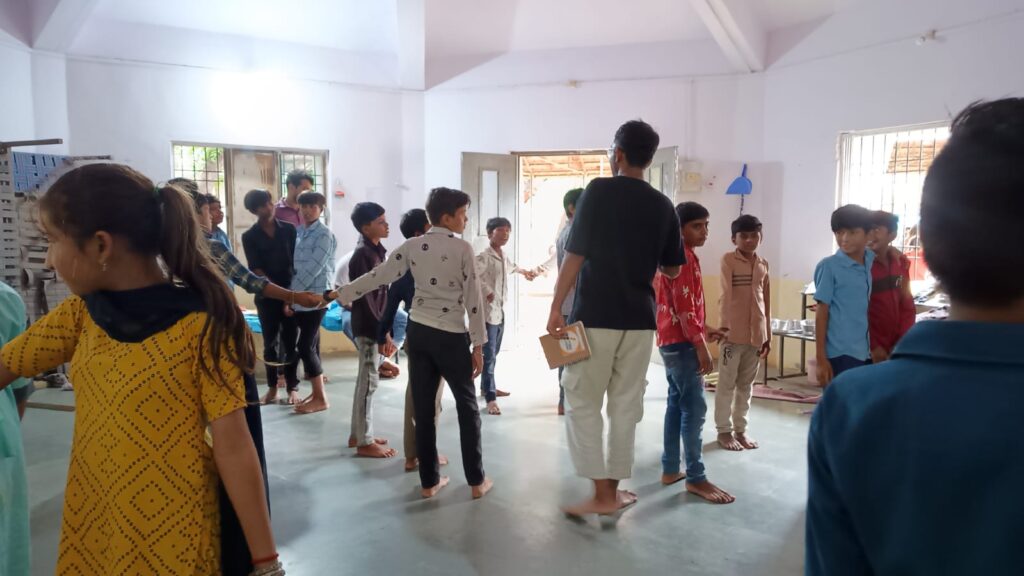
On the third day, a group enacted a classroom scene. When the floor opened to audience, the discussion soon led to the topic of punishments. In the play, a teacher (enacted by a child) punished a student for not having done their lessons. A spectator then came to replace the teacher and replayed the scene. Only this time they didn’t punish the student but asked another student to help them.
Also read: ‘Theatre Of The Oppressed’ As A Tool For Social Change
The audience discussed that the student can be given a chance since they might have actual reasons (and not laziness or careless) for not doing their work. However, it was interesting to note that later in the discussion, the unanimous belief was that the student must not be pardoned if they come unprepared the second time. I tried questioning it a few times but surprisingly, it didn’t change.
I pondered how we put a cop on our own heads in the face of oppression, how there is a sense of “too much liberty”, as though we are not entitled to it. The average Indian classroom and controlling parents perhaps internalise that for us.
To be honest, I wasn’t the most prepared for this workshop and was quite unsure of how to work with such a young audience. This ended up in me taking a lot of spontaneous decisions while jokering, coupled with unforeseen logistical and time-related challenges.
With Adolescent Girls At Vernora, Bhuj
August 20th, 2023
This was with eight girls between the age of 15 to 19 years, from Vernora village in Bhuj. On day one, I kept the focus largely on loosening up the body and breaking the ice. The objective of the workshops is not just to make and rehearse a play but to also facilitate dialogue and conscientization. But that’s a much longer, more gradual and personal process. A four-day workshop can at best spark a small conversation with oneself or a momentary feeling within. However, without conscientization, creating a forum becomes difficult. Having learnt this from previous workshops, I asked my colleagues to first conduct a gender training with this group. It made my job slightly easier.

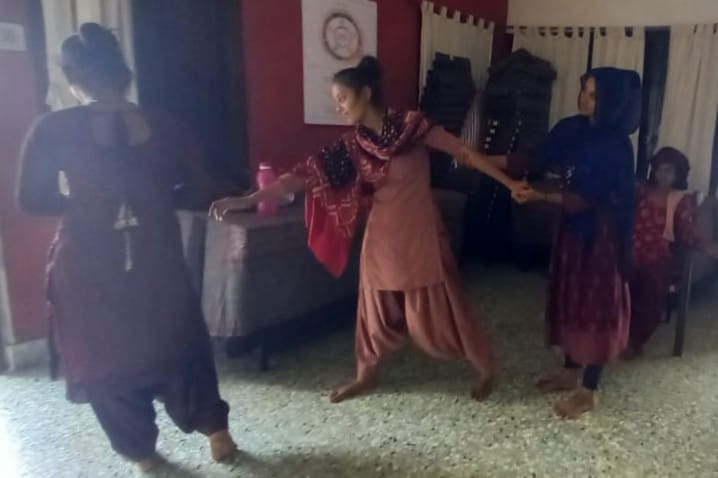
As a result, during the debrief session after Columbian Hypnosis (TO exercise), the discussion turned out to be quite insightful. While a few participants felt bad when they were “controlled”, some enjoyed “controlling”, yet others said they were feeling bad while controlling others. Some said that they could empathise with the person being “controlled” (when roles were reversed) and were hence mindful of their actions. They felt powerful, and powerless at different points.
I asked if it reminded them of any situations from their own life. Almost everyone spoke of their mother, grandmother or father who dictated the terms for them, be it going out, studying or getting married.
My co-facilitator Mayur, who conducted the rest of the workshop noted the importance of space. It was a large but closed-doors hall at the office. Hence, there were no distractions or apprehensions about girls’ immediate social group seeing them. Neither were there anyone else to mediate between the girls and him, a male facilitator.
In previous workshops we had to explain and stop the mediator (a teacher or field cadre) from helping them with ideas or answering questions on their behalf. In order to portray characters from their own lives, this time, the participants were asked to observe and make notes of their family members at home. It was immensely helpful for them when playing their parts and understanding nuances of how power plays out in behaviour.
With Adolescent Girls At Chopadva, Bhachau
August 20th-24th, 2023
Alongside the workshop with girls from Vernora that Mayur was conducting, I was doing it with another group of 12 girls in Chopadva, a village in Bhachau block of Kutch. KMVS had only been working for the past six months. So, the workshop was held in a bit of a hushed manner at the local tutor’s house during the time of tuition classes. It was a small courtyard.
This time, I was mindful of holding frequent debriefing sessions and dialogical processes; to nudge participants to reflect on their feelings and order of their lives. Frankly, it didn’t exactly yield what I hoped for but it did get them thinking, even if momentarily, about power dynamics in their households. For example, the role of their mothers. What kind of power she holds in a family in comparison to the father, grandparents or the son.
One participant used a bidi as a prop throughout the workshop to play the part of the father, even though I later learnt that her father doesn’t smoke. It amused me to think about the gendered image of masculinity and power in her mind.
During the final performance, one spectator tried to negotiate with the grandmother to allow her to study. She wore a niqab and promised to get married after completing her education. While the crowd roared at the grandmother allowing her to study, I missed the opportunity to question the spect-actors on whether it’s fair for one freedom to come at the cost of another. Should one have to give up their autonomy to marry (as per their choice and will) or wear the clothes conservatively, in order to be allowed to study?
There are different ways to look at it. Perhaps that first step of completing school, will in due time build agency among the girl to negotiate for delaying marriage when the time comes. Or maybe, it isn’t a great idea to cheer and endorse one sacrifice for another, from the point of view of a feminist organisation. But the more important thing here is to encourage these plurality of voices.
To question and make everyone think, regardless of what the thought is. That is the only and penultimate objective of TO. To dialogue.
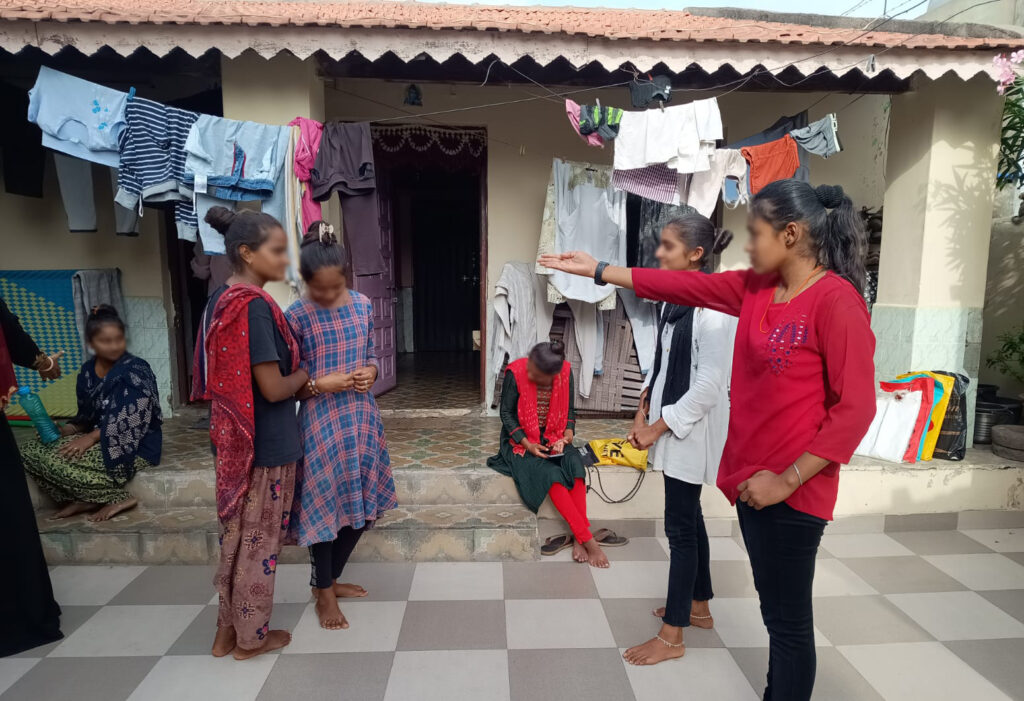
One important takeaway for me from this workshop was that the room will only reflect as much energy and comfort as that of the facilitator. And no matter how much one jumps, shouts and laughs in a workshop, the room can see through you.
I was at a personal low during that time and that came to show in the participants, which is why I probably could not get the best out of them. I also realised how crucial it is for me to be comfortable and rehearsed with a theatre game or exercise to be able to get the participants to do it. Having said that, it’s a symbiotic relationship where the energy of the room also motivates the facilitator. Of course, the onus is on the latter to lay the first brick well.
A year ago, when I first got excited by Theatre of the Oppressed, little did I imagine that logistics itself would be 80% of the work. The rest is preparedness. But I guess that’s the kind of practicality and good sense on field, that one signs up for, as an India Fellow.
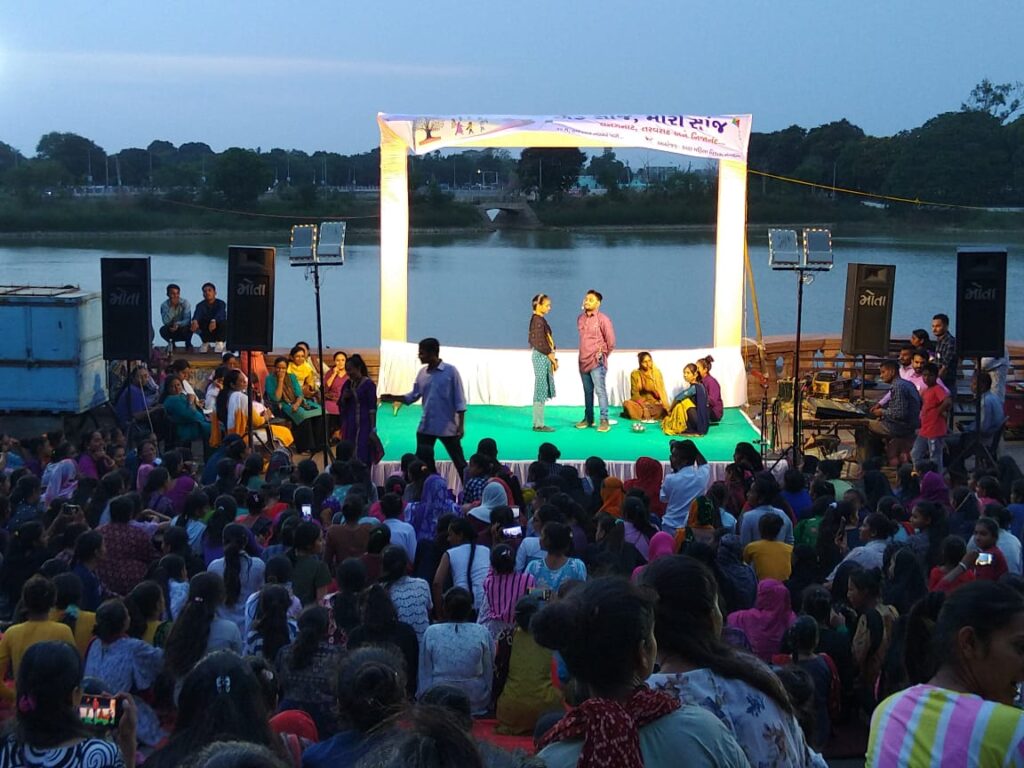

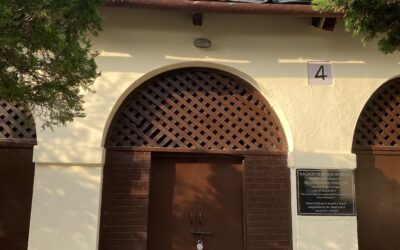
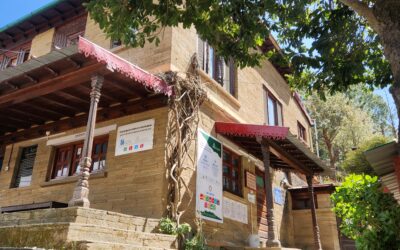

Can theatre of the oppressed be used with the intent of increasing ownership? In my case I am struggling to understand how people don’t feel ownership towards any physical intervention like a tank or pond provided or repaired by an NGO.